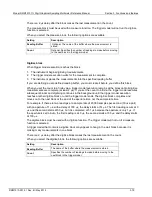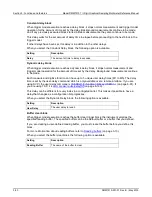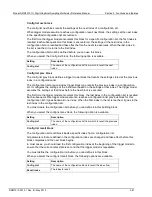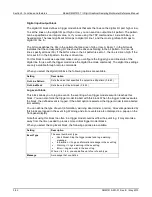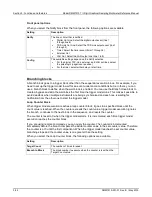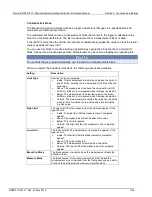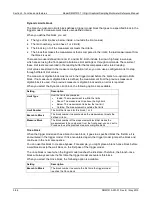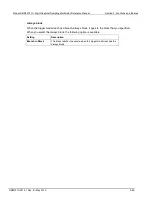
Section 3: Functions and features
Model DMM7510 7½ Digit Graphical Sampling Multimeter Reference Manual
3-76
DMM7510-901-01 Rev. B / May 2015
Trigger model
The trigger model controls the sequence in which measure actions occur. The Model DMM7510
trigger model is flexible, allowing you to control as much or as little as needed for your measurement
application.
When you are setting up a trigger model, you can choose the following options:
•
Wait for an event to occur before making another measurement
•
Notify other equipment and timers that an event has occurred
•
Wait for another piece of equipment to signal completion
•
Use measure configuration lists to apply different measure settings dynamically during trigger
model operation
•
Specify delays between events and measurements
•
Store measurements into a given buffer until an event occurs, then switch to another buffer
•
Conditionally take actions based on whether the measurement falls within set limits
Additional options are detailed in the following sections.
The Model DMM7510 includes predefined trigger models to allow you to quickly implement a trigger
model. You can also set up your own trigger models.
Trigger model blocks
Each trigger model consists of blocks that can be combined to create the trigger model. The blocks
can be combined from the front panel or by sending remote commands. You can connect a maximum
of 63 blocks as needed to control the instrument.
You can combine trigger model blocks as you would construct a flow chart diagram. Trigger models
are created using four fundamental blocks:
•
Wait:
Waits for an event to occur before the flow continues
•
Action:
Starts an action in the instrument, such as making a measurement or clearing a buffer
•
Notify:
Notifies other equipment or timers that an event has occurred
•
Branch:
Branches when a condition has been satisfied
Each type of block is described in the following topics.
Wait block
The wait block causes the trigger model to stop and wait for an event or set of events to occur before
continuing. You can specify up to three events for each wait block.
The event can occur before the trigger model reaches the wait block. If the event occurs after the
trigger model starts but before the trigger model reaches the wait block, the trigger model records the
event. By default, when the trigger model reaches the wait block, it executes the wait block without
waiting for the event to happen again (the clear parameter is set to never).


















